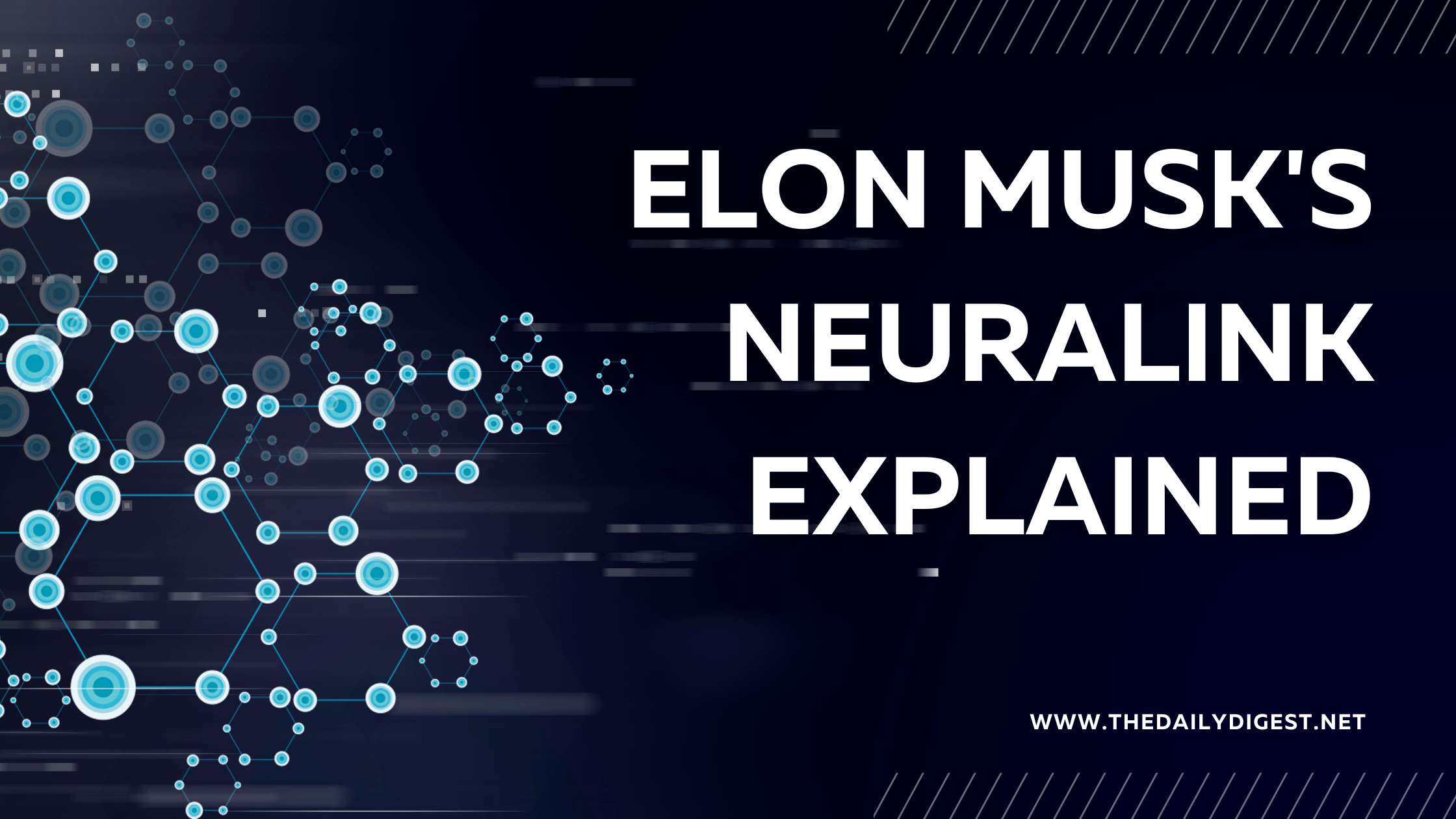Elon Musk's Neuralink Explained: What is Neuralink and How Does it Work?
Elon Musk wants your brain to tweet. Neuralink decodes thoughts & could control phones, cure diseases, or...download Kung Fu? Read on to find out the mind-blowing world of brain-computer interfaces.

Elon Musk is widely recognized for his ambitious and innovative projects, ranging from electric cars to space exploration. However, one of his most groundbreaking ventures is Neuralink; Elon Musk's Neuralink aims to develop brain-computer interface technology. In this article, we will learn about Neuralink, its working, features, and some frequently asked questions.
What is Neuralink?
Neuralink is a neurotechnology company founded by Elon Musk in 2016. Their main focus is developing implantable brain-computer interfaces (BCIs) called "the Link". This chip would be surgically implanted in the brain and would allow users to control external devices just by thinking.
In January of 2024, Neuralink announced its first human trials. The patient, who has paralysis below the shoulders, was able to play chess on a laptop using only the Neuralink device.
Here are some of Neuralink's goals:
- Assist paralyzed individuals by enabling them to control devices with their thoughts.
- Restore lost motor, sensory, and visual function.
- Enhance human memory and cognitive abilities.
- Treat neurological disorders.

How Does Neuralink Work?
Neuralink's technology works in a similar way to electrophysiology, which is the study of electrical activity in the body. Our nervous system communicates through electrical and chemical signals, which are detected by sensors. These signals are measured by changes in voltage spikes that occur across gaps between nerve cells called synapses.
Neuralink's technology captures brain activity data when we think or take physical actions. It's important to note that Neuralink's brain-computer interface technology does not read minds. Instead, it measures brain activity and interprets it as an action. Brain signals can detect different states like when we close or open our eyes, relax, or are in a deep sleep.
It can also detect when we are focused on something or taking action. To understand the complex data sets recorded by these devices, machine learning algorithms and other artificial intelligence agents are used. These technologies help to interpret and analyze the data collected by the sensors.
Why is Neuralink Important?
Neuralink has developed a way to implant brain chips into the brain that can help people who have injuries or disabilities. This used to require complex surgeries that were done by highly skilled surgeons, which took a lot of time and was very expensive.
But now, Neuralink has created a brain-computer interface technology that can do some of the work, which means the process is faster and easier.
The other innovation that Neuralink has made is related to artificial intelligence. When you implant a chip into the brain, you need to make sure that it sends electricity to the right place. This is really tricky because different parts of the brain control different things, like moving your hand or your leg. But with the help of artificial intelligence and machine learning, scientists can figure out which neurons control which movements.
This means that they can teach the chip to send electricity to the right place so that it can help people move their hands or legs more easily.
Neuralink Brain Chip Features:
Restoring Control for Paralysis: The current focus of Neuralink's human trials is on helping paralyzed individuals regain control over their lives. By interpreting brain signals, the chip allows users to operate computers and potentially other assistive technologies through their thoughts.
Treating Neurological Conditions: Neuralink envisions their technology being used to treat neurological disorders like epilepsy or Parkinson's disease. By stimulating specific areas of the brain, they hope to regulate abnormal activity.
Sensory and Motor Function Restoration: The chip's ability to record and interpret brain signals holds promise for restoring lost sensory functions like vision or damaged motor functions for those who have suffered strokes or spinal cord injuries.
Enhanced Cognitive Abilities: Neuralink speculates that their brain-computer interface could one day be used to improve memory, focus, and learning capabilities.
Brain-to-Brain Communication: The company ponders the possibility of a future where Neuralink allows direct communication between brains, eliminating the need for spoken or written language.
The first human received an implant from @Neuralink yesterday and is recovering well.
— Elon Musk (@elonmusk) January 29, 2024
Initial results show promising neuron spike detection.
FAQ's:
- Is Neuralink FDA Approved?
Yes. Neuralink received FDA approval to begin human trials in May 2023. This is an important distinction from full FDA approval for a medical device.
- Is Neuralink being used on humans?
Yes, Neuralink is being used on humans in a limited capacity. In January 2024, they announced the first successful implant of their brain chip in a human participant. This initial trial focused on an individual with paralysis below the shoulders.
- When will Neuralink be available?
Neuralink's wide availability is difficult to predict due to multiple factors. Human trials, FDA approval, and technical advancements are some of the significant factors affecting its release. Even if the trials go smoothly, it could take years to complete, and the FDA approval process is lengthy. Additionally, the ambitious goals of Neuralink require significant technological advancements, making it unlikely to be widely available in the next few years. A more realistic timeframe could be 5 to 10 years, or even longer.
- What is Neuralink Brain Chip?
Neuralink brain chip, called the Link, is a brain-computer interface (BCI). It's a tiny device implanted in the brain that can record and interpret electrical signals from neurons.
Final Thoughts
Elon Musk's Neuralink project has the potential to bring about a major paradigm shift in the field of brain-machine interfaces. The idea of directly interfacing the human brain with computers has been a long-standing ambition of researchers and scientists alike for decades, and Neuralink's ambitious plans to develop a high-bandwidth, minimally-invasive neural implant technology could be the key to realizing that vision. With the ability to seamlessly integrate with the brain's neural networks, the technology could enable a wide range of applications in healthcare, communication, and entertainment. It's exciting to think about the possibilities that could be unlocked with such a groundbreaking technology, and we eagerly await the day when it becomes available to all.
Do you want to write for The Daily Digest? Email us at connect@thedailydigest.net

